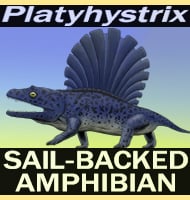Anconastes
In Depth Anconastes was a realtively small temnospondyl amphibian, and although the name means ‘mountain dweller’, Anconastes probably didn’t stray too far from the swamps and water systems of Carboniferous North America. Further Reading - A new genus and species of trematopid amphibian from the Late Pennsylvanian of north-central New Mexico, David S Berman, Robert … Read more
